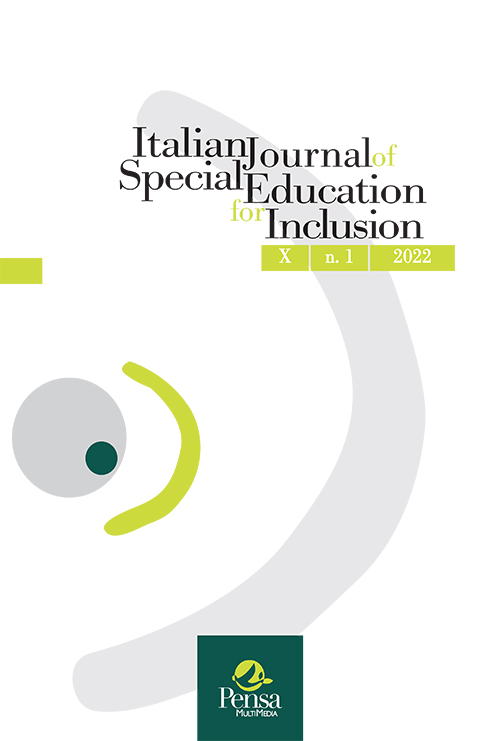Il corpo che si narra: il teatro kamishibai come “buona pratica” educativa
DOI:
https://doi.org/10.7346/sipes-01-2022-10Resumen
Il teatro si configura come uno scenario fortemente educativo, auto formativo (Cambi et al., 2010; Capobianco, Vittoria, 2012), catartico (Artaud, 1982, 1996; Cambria, 2007), inclusivo (González Rojas, Sandoval Poveda, 2021; Hartwig, 2021). Attraverso l’esperienza teatrale, il corpo si racconta, esprimendo le emozioni e scandendo i gesti, nonché i segni del proprio sentire, coniugando, altresì, la conoscenza del mondo esterno ed interno. Di conseguenza, quando la persona con disabilità si narra, si riscrive selezionando i contenuti, le emozioni, i pensieri in un’azione di profonda riflessione che permette di rileggere e ripensare il vissuto, dando “nuovo corpo all’esperienza” (Mortari, 2007). In questo senso, l’attenzione va rivolta al rapporto che esiste tra qualità della vita e approccio narrativo-autobiografico (Gaspari, 2018; Schön, 2006; 1993), nel quale concorrono molteplici fattori ed elementi che investono il processo di inclusione. In questo frame work teorico si colloca la proposta educativa del Kamishibai (Aldama Jiménez, 2005a, 2005b; Cid Lucas, 2009; 2006; Proli, 2019) attraverso cui la persona con disabilità intende ricostruire e rielaborare il personale percorso di vita, la propria condizione esistenziale, per indirizzare sé stessa nella proiezione verso il futuro. L’uso di una didattica spettacolarizzata sul modello teatrale del kamishibai prende in considerazione il coinvolgimento creativo ed emozionale degli studenti come elemento cardine del processo di apprendimento, valorizzando in ciascuno, l’espressione artistica e quindi corporea.


